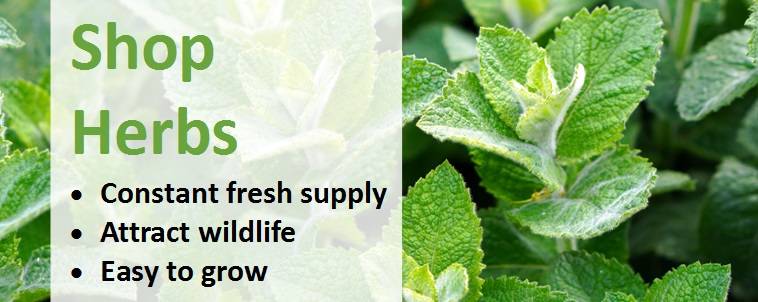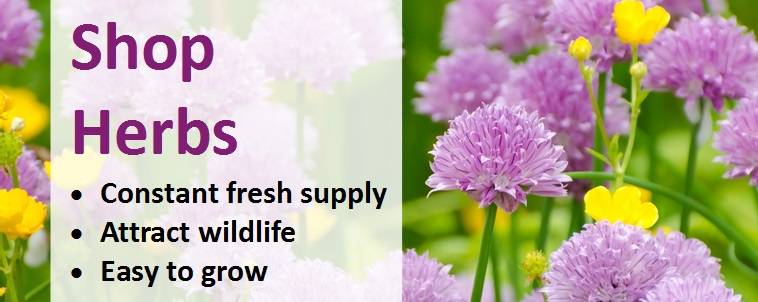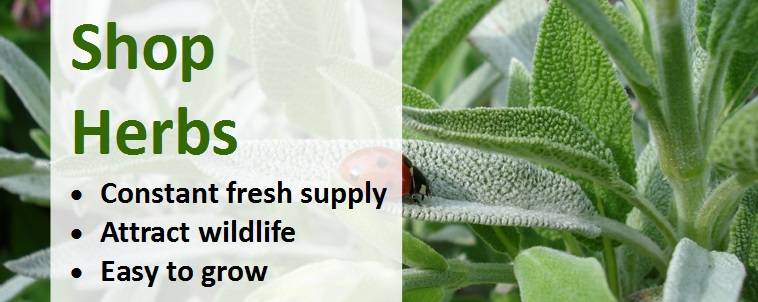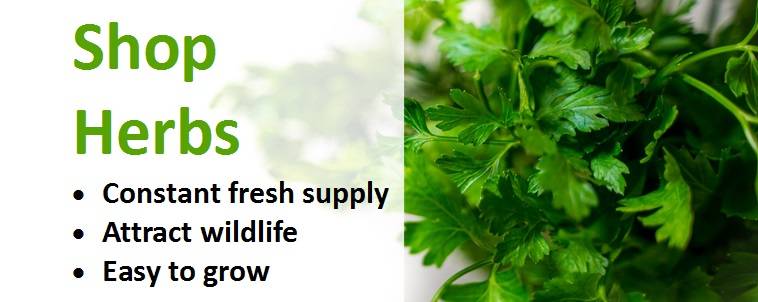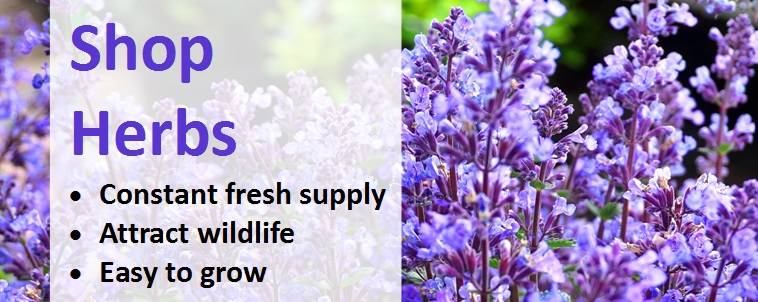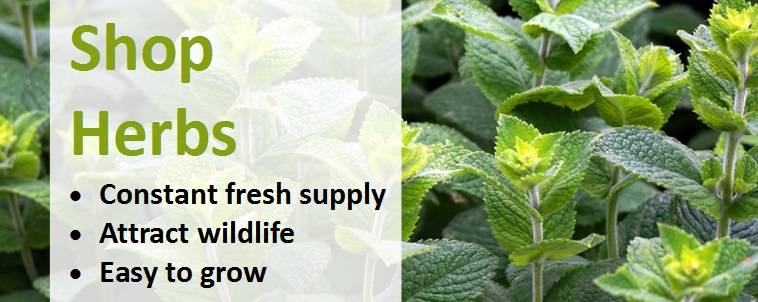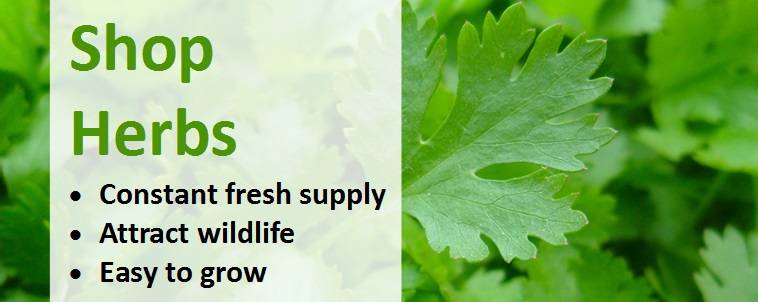Guide to Herb Plants
Growing herbs, or even creating a herb garden, is easier than you think. All you need is good light conditions in a free, well-drained soil or even on a windowsill. Herbs are an essential ingredient in a wide range of foods, so growing your own means a fresh supply of aromatic flavourings is never more than a few steps away. When natural growing methods are used, growing your own herbs can be a culinary delight, which we guarantee to taste better than anything you find in the shops. Even if you don't intend to use them in the kitchen, many herbs boast interesting foliage, a beautiful aroma and flowers which attract wildlife and add a splash of colour.
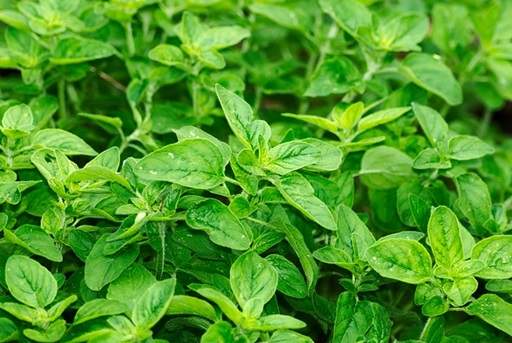
Where to Grow Herbs
Herbs can be planted in a variety of places in the garden:
Dedicated Herb Garden
Growing herb plants in a herb garden can make harvesting a little easier if you intend to grow multiple herbs and will create a fabulous rich scent nearby, especially on hot sunny days. You can make a herb garden look very ornamental by combining different herbs that have particularly attractive features, such as the golden-edged foliage of Thyme Silver Posie, attractive pink flowers of Chives and spikes of pink-tinged, white flowers of Common Valerian.
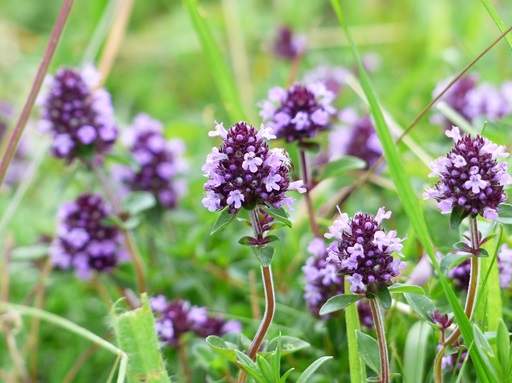
Growing Herbs in Garden Borders
Herbs can be planted in general borders amongst other plants and flowers, which is a good option if you don't have space for a separate herb garden. One option is to choose herbs with colourful foliage to compliment flowers on nearby shrubs and perennials. Alternatively, you can grow herbs for their own colourful flowers - for example, the attractive yellow flowers or fennel plants which are attractive to bees and butterflies makes it a great addition to the herbaceous border.
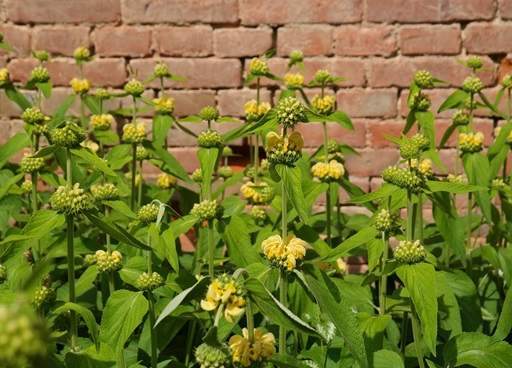
Growing Herbs in Patio Containers or Windowboxes
Potting up herbs into containers on the patio or outside the back door of your home works well if you're short on space. Alternatively, they look great and are very accessible in window boxes. This way you'll be able to harvest a little of whatever you need when cooking and barely step a foot outside! Just remember to water them regularly to prevent your plants from drying out.
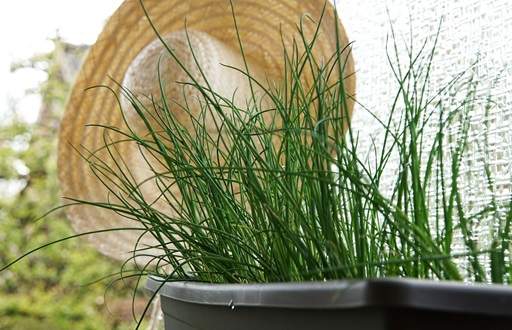
Growing Herbs Indoors
Even if you're an urbanite without a garden, you can still grow herbs indoors and have fresh produce all year round. What's more, herbs grown on the kitchen windowsill couldn't be more convenient for harvesting! A number of herbs are suitable for growing indoors including spearmint, peppermint, parsley, chives, basil and marjoram. Don't worry about regularly cutting your herbs to incorporate into culinary dishes, this will actually help the plants by encouraging them to develop new growth.
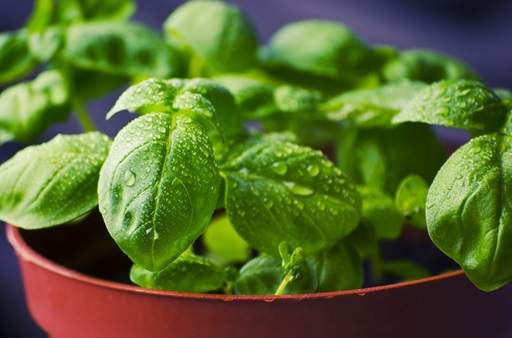
Other Options
Herbs can be incorporated into a vegetable patch and certain varieties such as chives and thyme make an excellent informal edge to a path. You can also make use of new or used grow bags, which will help to save space in smaller gardens.
Culinary Uses
Herbs are great for adding vibrant flavours and texture to a range of culinary dishes and will taste better than anything you will find in the supermarkets. They also freeze well in whole sprigs, allowing them to be used all year round. We've listed a few of our favourites recipes with mint below, but there are many more:
Home-made lemonade with mint - wrap your cut mint leaves in a tea towel and bruise them with a rolling pin before adding them to a pitcher with the lemon juice and zest and sugar cane syrup. Top up with sparkling water, mix well and add more sugar cane syrup to taste.

Lamb with mint sauce - finely chop your fresh mint leaves, sprinkle with salt and place in a small jug. Add 1 tablespoon of sugar, pour over a little boiling water and vinegar.
Chicken with mint and lime - start by making a marinate with lime, salt, olive oil and fresh mint. Rasp the skin of one lime into a bowl, juice the lime into the bowl and add the chopped mint. Add salt, mix together and put it over the chicken skin. Spice with cayenne pepper and coriander and put into the oven for 45 minutes.
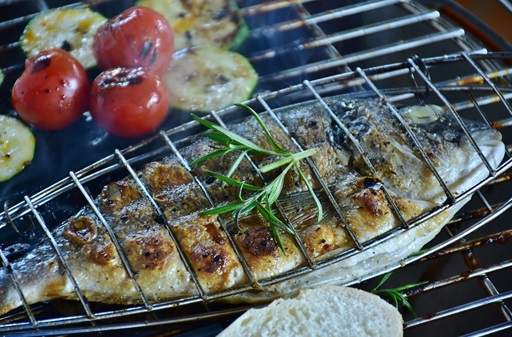
Selecting a Herb Plant
Annual vs. Biennial vs. Perennial
Annuals are plants that grow very quickly to provide a crop, then die. Biennial plants refer to those which grow quickly, bloom in their second year, then die. Both annual and biennial herbs are fast growing and best sown at regular intervals throughout the spring and summer to ensure you continually have a fresh supply. Popular annual herbs are basil, coriander and dill and popular biennial herbs are caraway, chervil and parsley.
Perennials are plants that will live for more than 2 years; the foliage may die back over the winter but the plant will burst into life again in the spring. Perennials are slower growing and will require a more permanent home. Some of the best perennial herbs are chives, fennel, marjoram, spearmint, peppermint, sage, tarragon and thyme.
Special Requirements
If you live near the coast and need herbs that will tolerate salt spray and windy conditions, the best options are lavender, sage, thyme and rosemary. If you intend to plant in a moist soil (perhaps one that isn't as free-draining as you might like) or shade, the herbs that will deal with these conditions best are chives, mint, lemon balm and parsley. A full list of all our herb plants is given at the end of this article.
Planting Advice
When to Plant
Annual and biennial herbs are fast growing and best planted at intervals through the spring and summer to ensure you have a continuous fresh supply. The guidance for planting perennial herbs is the same as for other types of perennials - they can be planted at any time of the year, except when the soil is frozen or waterlogged. Autumn planting is ideal if you have a light soil, otherwise spring is the prime time.
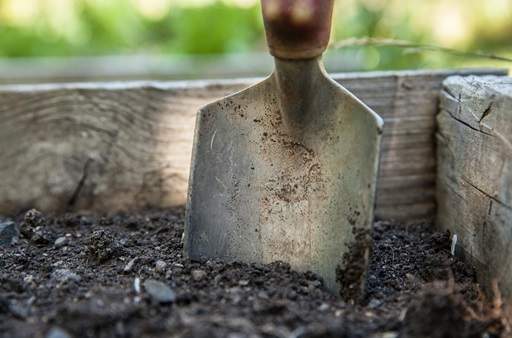
Soil
Herbs prefer a light, moist yet free-draining, neutral to alkaline soil with plenty of bulky organic matter. If you have very acidic ground, apply a generous handful of lime per square metre of soil when cultivating. If you have a heavy clay soil, build in some grit or sand before planting and mix in plenty of organic matter such as well-rotted compost, manure or grass clippings before putting your herbs into the ground. Try to avoid planting herbs in a patch of ground that often lies wet, but if you have no choice create a raised bed using good quality compost and position your herb plants in there.
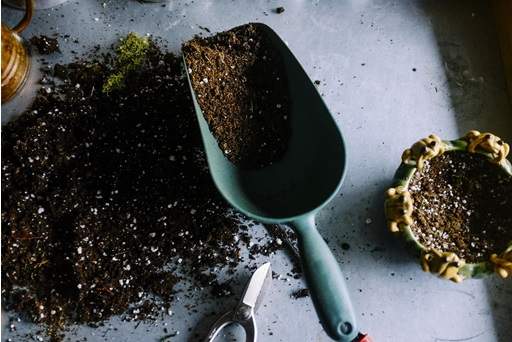
Aspect
Most herbs prefer a sunny, sheltered location, except a few that can tolerate or even prefer partial shade:
- Herbs for Full Sun - caraway, chives, common valerian, fennel, hyssop, lemon thyme, lovage, peppermint, rosemary, spearmint, tarragon, thyme, water mint.
- Herbs for Partial Shade - salad burnet.
- Either Full Sun or Partial Shade - bay laurel, lemon balm, marjoram, parsley, sage, sorrell.
If you're planting herbs in the border, choose spots that suit the light preferences of the herb plants you're going to grow. If you intend to plant up a herb garden, try to split it into 2 parts with one side receiving full sun throughout all or most of the day and the other being semi-shaded, or at least receiving some rest bite from the strongest midday sun, so you can cater for the preferences of different types of herbs.
For window boxes, it often works well to have one window box on the sunniest side of the house and another on a shady side, so you can accommodate the preferred conditions of a range of different herbs across both. Biennial and perennial herbs supplied in pots are already frost-hardened so are best planted in their final position straight away as they can be difficult to successfully re-position later.

Planting in the Garden
Start by removing all perennial weeds and raking the soil level, removing any large rocks or stones. Herbs are best handled at their base or by their rootball to avoid damaging their vulnerable foliage and stems. Remove your herb plants from their containers and gently loosen out the roots. Dig a planting hole 1.5 times the width of the rootball and deep enough such that the top of the rootball is just below the soil surface. After re-checking the planting height, back-fill, ideally with a mix comprising 50% of the dug soil and 50% compost or organic matter (garden compost, well rotted manure or grass clippings). Firm the soil down with the back of your trowel and water well at the base of the plant (without allowing water to touch the foliage).
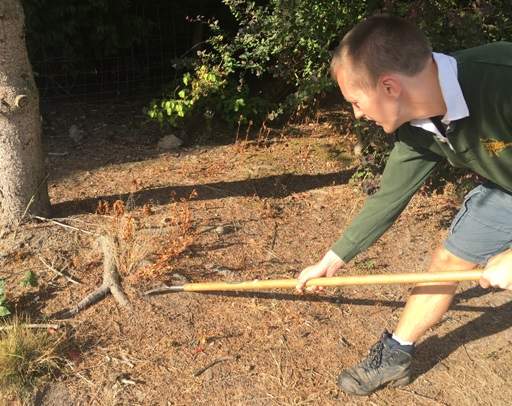
Growing Herbs in Containers
Some herbs can develop deep roots, especially shrubby varieties such as rosemary and bay plants, so deep pots are best. Making sure you choose containers with drainage holes in the base, plant them up using a loam-based potting compost such as John Innes No 2 mixed with one-quarter coarse grit to improve drainage. Once planted, position your pots on 'feet' to allow the moisture to freely drain away during periods of wetter weather. If you choose to grow either spearmint or peppermint in a container we would recommend lifting and dividing plants annually to rejuvenate them and help sustain their vigour. For other perennial varieties, look to re-pot every few years if they become straggly, weak or start to dry out rapidly. When re-potting, spread out the roots and remove as much of the old compost as possible before planting into a new container.
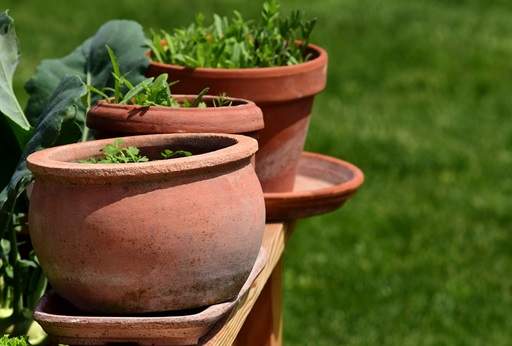
Harvesting
Harvest leaves from the upper and outer part of your herb plants to give new leaves in the centre the opportunity to fully develop. The best time to harvest is early in the morning before any of the essential oils evaporate. Avoid picking more than one-quarter (max. one-third of you really need it for an important recipe!) of the leaves of any given plant at one time to ensure it retains the strength to rejuvenate. Evergreen herbs such as thyme, rosemary and sage can be harvested all-year round, but will only re-grow and provide a replenished supply during the growing season.
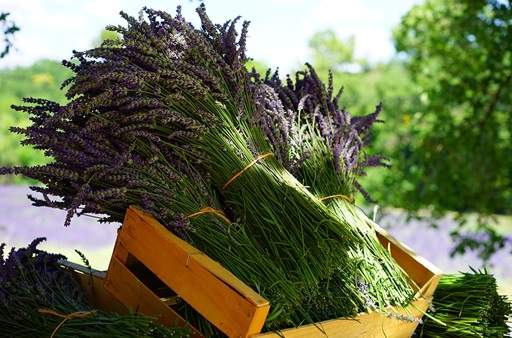
Garden Care
Herbs are generally quite low-maintenance plants, but there are a few important rules you should follow to ensure your herbs can be a regular culinary delight.
Planting Advice
Watering
Herbs grown in containers must be watered regularly to keep the compost moist, but never soggy (this it the main reason they require more attention compared to herbs grown in the garden). Shallow-rooted plants dry out quickly so water regularly when they are growing strongly. We recommend watering in the morning as this will give your herbs moisture to better copy with the heat of warm summer days.
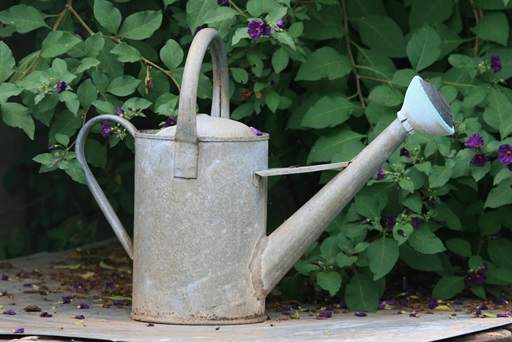
Feeding
We recommend feeding your herb plants, especially those grown in containers, regularly during the growing season. Use a balanced liquid feed to encourage leafy growth, rather than a high potash feed which promotes flowering. Container-grown herbs are best fed weekly from March through to September. Make sure you apply the correct amount as too little will result in weak growth whilst too much will cause the foliage to lose its intended flavour (check the box or package for guidance).
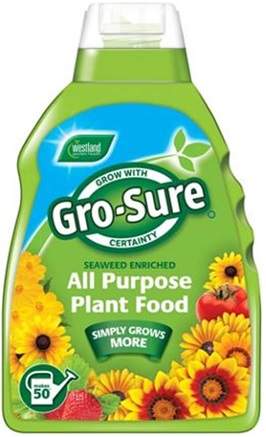
Trimming & Tidying
Trim herbs during the spring to foster lush new growth. Be sure to remove all trimmed parts and other debris and leaves that have fallen from your herbs at other times of the year to avoid the development of fungal diseases.
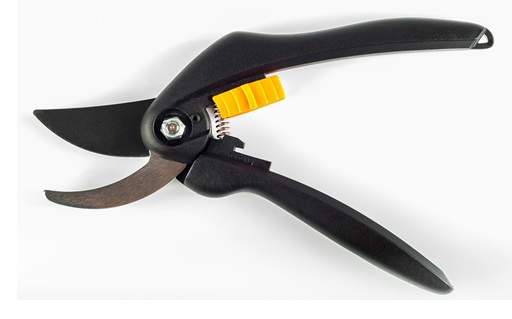
Deadheading
Dead-head any flowers that appear on your herb plants as soon as they start to fade so the plants devote all of their energy to foliage growth. If convenient, give varieties such as thyme and lavender a trim after deadheading also.
Cold Protection and Over-Wintering
Protect your herbs from frost using horticultural fleece or an alternative insulating material such as bubble wrap. Positioning your containers against a wall will also help to provide protection. A number of herbs are best grown outdoors then brought into the house and planted in pots on a south-facing windowsill in the winter. We recommend this approach for chives, peppermint, spearmint, parsley and tarragon.
For other herbs a cold frame, open-fronted shed or somewhere in the rain shadow of a wall make good places to put your herbs for winter protection. Use plywood or a sheet of glass to keep heavy rain off your herbs if needed.
Pests, Diseases and Problems
- Fungal Diseases - If you grow herbs indoors or in the greenhouse, provide ventilation where possible to improve air circulation around the foliage. This will help to reduce the incidence of fungal diseases. If you're herbs become infected with a fungus, spray the foliage with water mixed with a little washing up liquid (we discourage the use of fungus killer spray for edible plants).
- Mint Rust - can affect peppermint, spearmint and marjoram.
- Rosemary beetle - may affect rosemary, lavender, sage and thyme.
- Birds- install netting taunt over a framework of stakes over your herb garden if birds become a problem.
- Slugs and Snails- place cracked egg-shells around your plants to deter slugs and snails.
Herb Plants A-Z
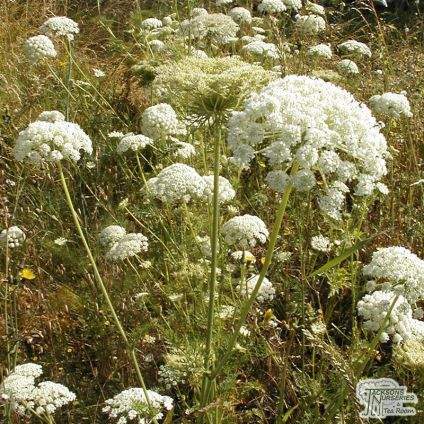 |
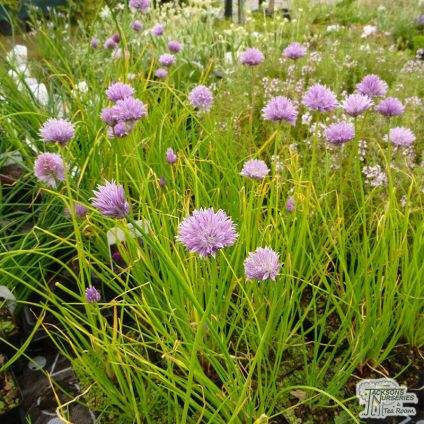 |
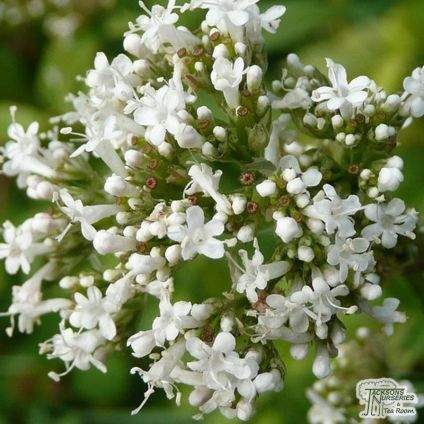 |
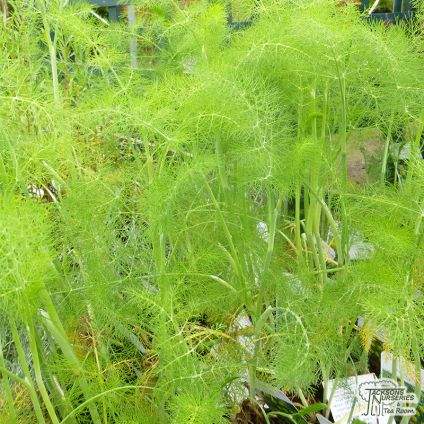 |
| (Valeriana Officinalis) | (Foeniculum Vulgare) |
- Caraway (Carum Carvi) - delicate umbellifer clusters of white flowers and small, feathery leaves. Caraway leaves and roots can be used fresh as a vegetable and ripe seeds are tasty once dried.
- Chives (Allium Schoenoprasum) - long, edible, strap-like tubular leaves and pink flower spikes. Chives is more tolerant of heavy soils and overly moist conditions than other herbs and also grows well in containers. The leaves, bulbs and flowers are all edible with a mild onion-garlic flavour. Add chives at the end of cooking or their flavour will disappear. We recommend cutting back to the ground after flowering to encourage the development of fresh new leaves.
- Common Valerian (Valeriana Officinalis) - spikes of pink-tinged, scented, white flowers from June-August.
- Fennel (Foeniculum Vulgare) - aromatic deciduous biennial with soft, feathery, almost hair-like foliage with a sweet fragrance and an elongated root resembling a carrot. Fennel plants produce flat heads of tiny yellow summer flowers, which should be removed before they shed seeds. Ripe seeds collected from the plant can be used for flavouring sauces, bread and fish dishes. Prefers a deep soil to accommodate it's tap root. Dead stems should be cut back in early spring as the new growth starts to appear and plants are best divided every 3-4 years. Fennel can reach 1.5m high, so you'll probably only want one or two plants.
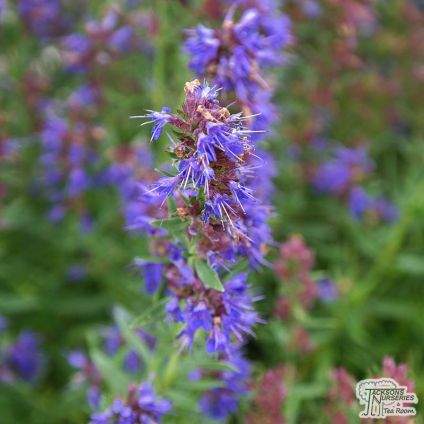 |
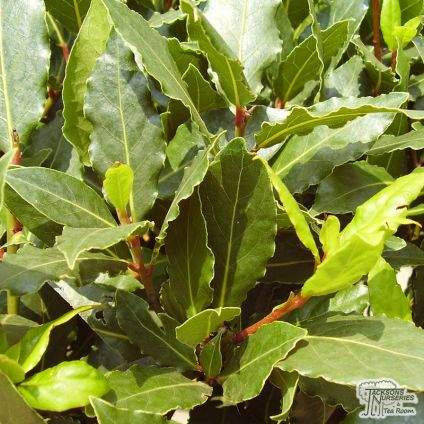 |
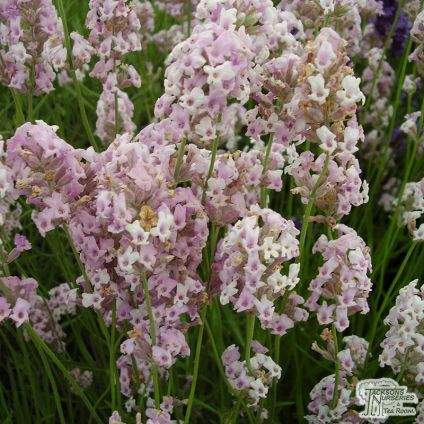 |
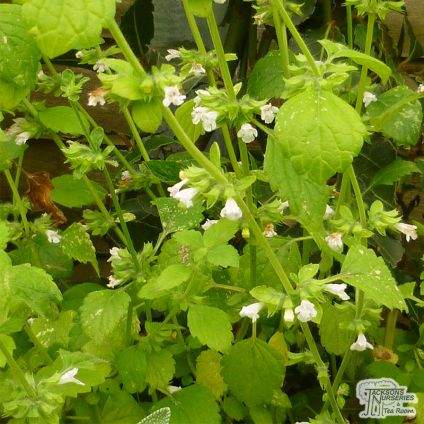 |
|
(Lavender) |
- Hyssop (Hyssopus Officinalis) - ideal for using in robust, rustic dishes like potato and bean soup.
- Bay Laurel (Laurus Nobilis) - leathery, glossy, evergreen, dark green leaves that are extremely aromatic. Bay is particularly well-suited to growing in a container and tolerates both sun and shade, providing it isn't too wet and some protection from cold winds is provided. Remove suckers as they appear and trim to shape in summer. In autumn, protect the rootball of container-grown bay bushes by moving the pot into a conservatory or greenhouse, or securing bubble wrap around the pot. Bay leaves taste best when picked and dried in summer and work well with meat dishes. Leaves can be dried by placing them between the pages of an old book, weighted down with a stack of other books placed above. This will makes leaves easier to store as it prevents them from curling as they dry.
- Lavandula Rosea (Lavender) - superb Old English Lavender bearing racemes of pastel rose pink flowers.
- Lemon Balm (Melissa Officinalis) - crinkled, light green leaves which give a lemon fragrance when crushed.
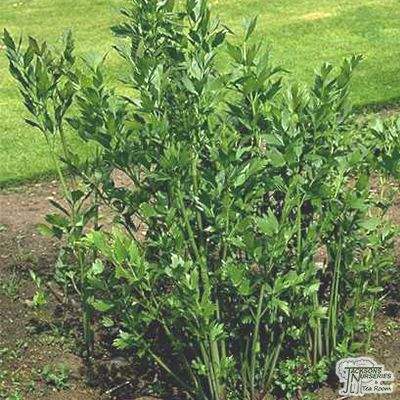 |
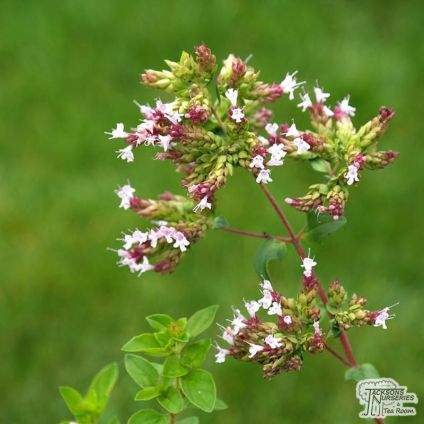 |
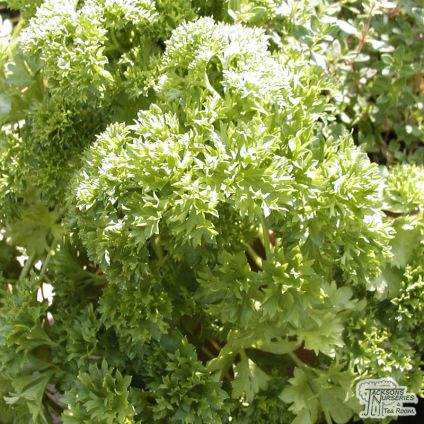 |
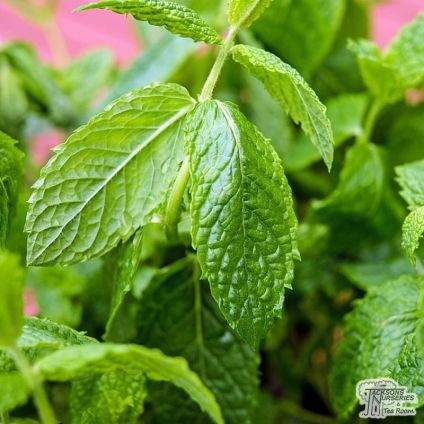 |
- Lovage (Levisticum Officinale) - smooth foliage which has a celery-like flavour and yellow summer flowers.
- Marjoram (Origanum Vulgare) - versatile herb also known as oregano and commonly used with Mediterranean, Greek and Mexican cuisine. The leaves can be used fresh or dried.
- Parsley (Petroselinum Crispum) - fragrant deciduous leaves which are an essential ingredient in Italian, Middle Eastern and French cuisine and goes particularly well with fish. Leaves are best picked and eaten fresh immediately before flowering.
- Peppermint (Mentha Piperita) - heavily scented, toothed oval shaped leaves and light purple flowers. As a vigorous grower that spreads via underground runners, peppermint is best grown in a container or lifted and divided every 2-3 years in spring. Used in a range of recipes as well as flavouring tea. Remove the flowers to stop it self-seeding.
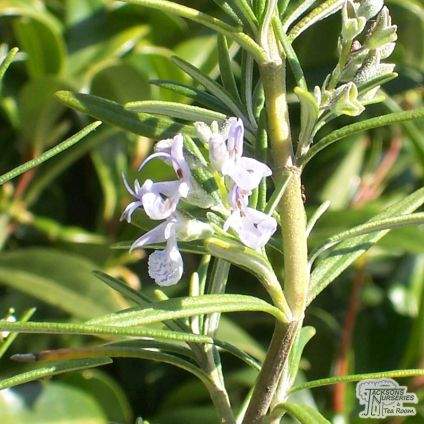 |
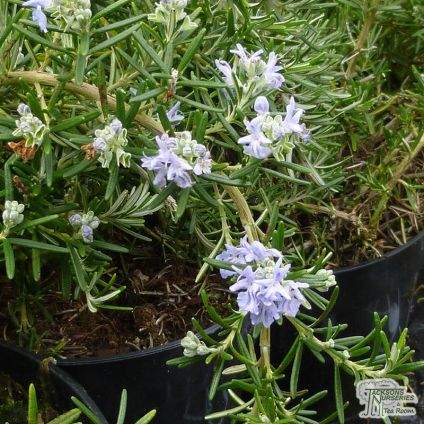 |
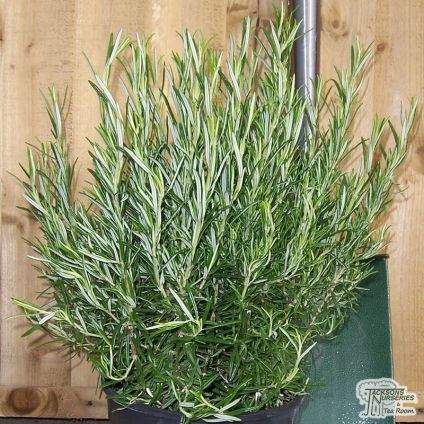 |
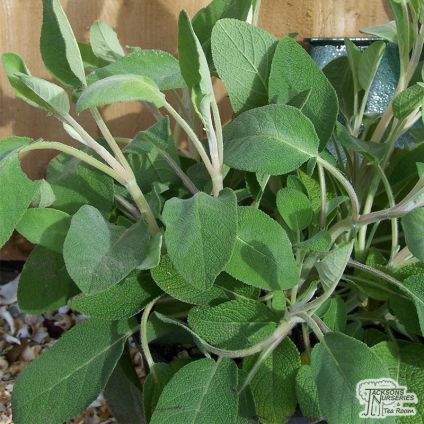 |
- Rosemary (Rosmarinus Miss Jessopps Upright) - narrow dark green leaves with white undersides. Miss Jessopp's Upright is a more vigorous and upright variety than Officinalis, makes it a good focal point for the herb garden.
- Rosemary (Rosmarinus Prostratus Group) - outstanding low-growing or trailing variety, ideal for hanging baskets, cascading over a wall or through a rock garden, or in patio pots.
- Rosemary (Rosmarinus Officinalis) - aromatic, evergreen leaves and purple-blue spring-summer flowers. Rosemary plants make a great low hedge and tolerate poor, chalky soils. They are best trimmed to shape and fed in March, after flowering. Leaves can be used either fresh or dried, usually as a flavouring for meats such as lamb.
- Sage (Salvia Officinalis) - aromatic, grey-green leaves and tubular purple flowers between May and July. Should be pruned hard in early spring to promote a bushy growth habit and to prevent it from becoming leggy. Sage leaves can be dried and used for tea or as a meat flavouring and are best picked before flowering. Sage combines well with chopped onions and sausage meat to makes a tasty stuffing.
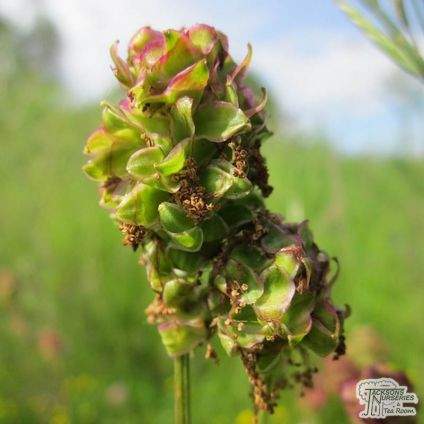 |
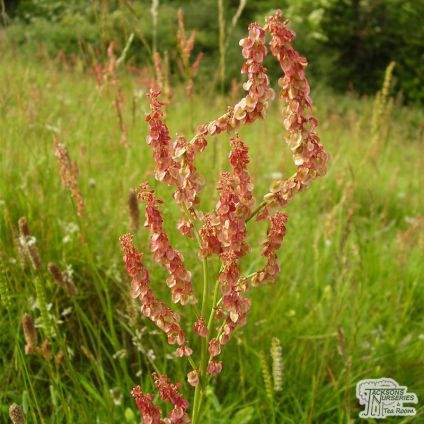 |
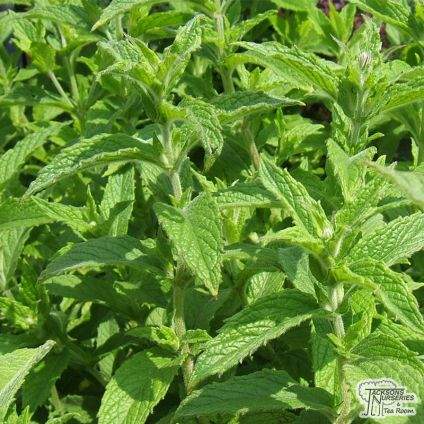 |
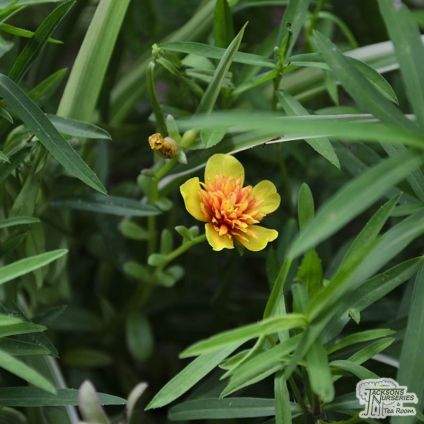 |
- Salad Burnet (Sanguisorba Minor) - elongated, feather-like leaves that arch gracefully outwards.
- Sorrel (Rumex Acetosa) - leaves are great for a variety of dishes and excellent added to a mixed salad.
- Spearmint (Mentha Spicata) - popular herb with reddish-green stems and light purple summer flowers. As a vigorous grower, spearmint is best grown in a container or lifted and divided every 2-3 years in spring. Used in a range of recipes as well as flavouring tea. Remove the flowers to stop it self-seeding.
- Tarragon (Artemisia) - produces an abundance of stems which you can easily harvest and dry. Leaves are used to flavour cuisine with poultry or egg, or incorporated into sauces and salad dressings.
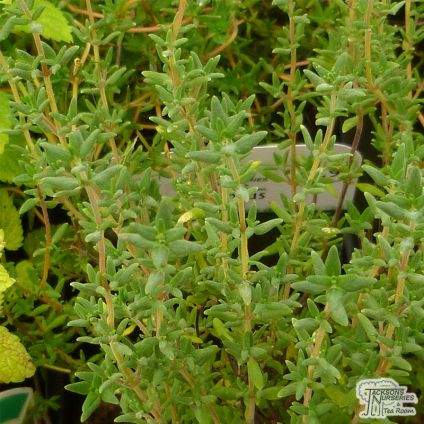 |
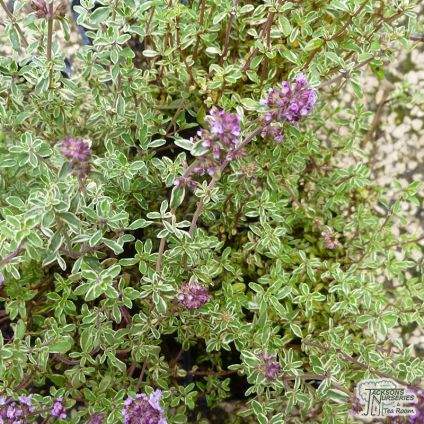 |
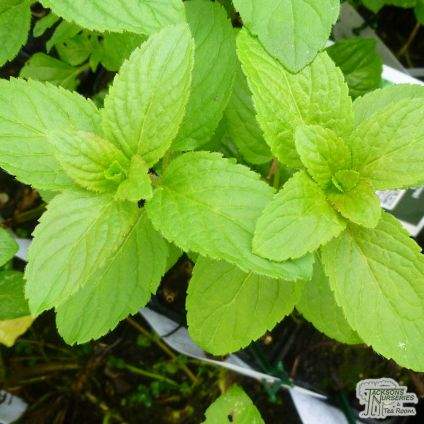 |
|
- Thyme (Thymus Vulgaris) - low bushy shrub with aromatic foliage and mauve early summer flowers.
- Thyme (Thymus Silver Posie) - silver-margined, aromatic grey-green leaves & pink-purple summer blooms.
- Water Mint (Mentha Aquatica) - aromatic foliage which can be used in the same way as other mints.
-
Plant Guides
- Guide to Bamboo Plants
- Guide to Climbing Plants
- Guide to Climbing Roses
- Guide to Conifers
- Guide to Floribunda Roses
- Guide to Fruit Bushes
- Guide to Fruit Trees
- Guide to Garden Ferns
- Guide to Garden Shrubs
- Guide to Heather Plants
- Guide to Hedging Plants
- Guide to Herb Plants
- Guide to Herbaceous Perennials
- Guide to Hybrid Tea Roses
- Guide to Japanese Maple Trees
- Guide to Ornamental Grasses
- Guide to Rhododendrons
- Guide to Topiary
Share this page:


